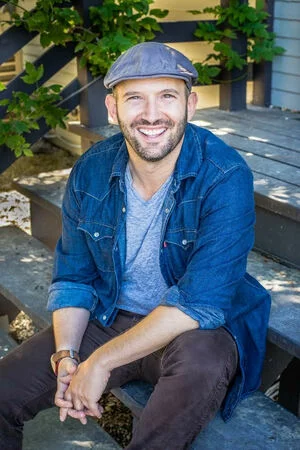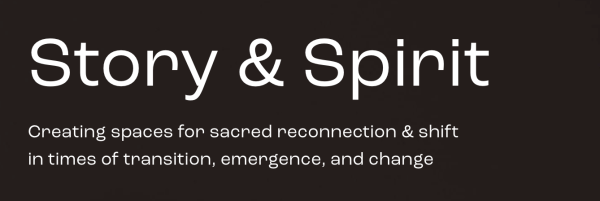The stories organizations tell have the power to shift perspectives. The way your organization obtains and tells those stories matters more than ever. In this months’ In Case You Missed It from 2018, Celia Hoffman chatted with Story and Spirit’s Michael Kass about how we can all be more ethical in our story gathering and telling.
You know that stories are powerful. You also recognize that with great power comes great responsibility. But when was the last time you thought about the specific responsibilities that come with sharing your organization’s stories? Compelling stories are often deeply personal, and if you want to use them in an ethical manner, considering how they can influence a target audience is only half the battle. You must also think about their impact on the person whose story is being told.
 Michael Kass has made a study of the challenges presented by ethical storytelling. The founder of The Center for Story and Spirit, a storytelling consultancy for both individuals and organizations, Kass has worked for several nonprofits including My Friend’s Place, the Los Angeles Free Clinic, and the Nonprofit Finance Fund.
Michael Kass has made a study of the challenges presented by ethical storytelling. The founder of The Center for Story and Spirit, a storytelling consultancy for both individuals and organizations, Kass has worked for several nonprofits including My Friend’s Place, the Los Angeles Free Clinic, and the Nonprofit Finance Fund.
Last year, Kass partnered with the Hollywood Homeless Youth Partnership to publish an issue brief entitled “Navigating the Ethical Maze: Storytelling for Organizations Working with Vulnerable Populations.” The Goodman Center’s Celia Hoffman recently sat down with Kass to learn more about the steps any organization can take to ensure it’s telling stories ethically.
Celia Hoffman: How do you define “ethical storytelling?”
Michael Kass: Ethical storytelling, at base level, is making sure that everyone has a shared understanding of the purpose of the story, where it’s going to be used, how it’s going to be used, and that the storyteller gives informed permission before, during, and after sharing their story.
CH: How have you seen organizations struggle with this practice?
MK: The struggle I see is that they’ve been told over and over again that they need to tell a story in order to connect and pull at the heartstrings. Simultaneously, they also want to protect the confidentiality and the interests of people that they serve. I think we’ve all seen stories that feel they may be exploiting the people they are trying to serve. I don’t think it’s done out of any sense of malice. I think it’s done because of a lack of awareness.
There hasn’t been a lot of training around how to meet both of those needs, and so the dynamic that’s come up is organizations feel they need to tell a heartwarming story and that they’re going to need to feel a little bit dirty when they do that. But that’s not a true assumption.
Part of what I’m trying to do is explode this assumption and say you can actually meet both of those needs in really creative, interesting, and impactful ways.
CH: In your issue brief, you outline a number of risks that organizations face when gathering client stories. One of which is re-traumatizing the storyteller. Can you tell us more about this?
MK: Because of the way story works on the body, the brain doesn’t know the difference between something that is happening and something that it’s imagining. Therefore, if you’ve been traumatized and you begin to retell that story of trauma before it’s ready to be shared, you risk re-experiencing the trauma in your body.
When storytellers re-experience trauma, it’s common to see them backslide. Perhaps they were making progress and then they tell their story and it re-traumatizes them, putting them back in a tenuous place.
CH: How do organizations guard against re-traumatizing their storytellers?
MK: Having a really good relationship with the storyteller is very important. If it is a clinical relationship, really talk to the clinical staff and ask, is this person ready to tell their story?
Even more important is to allow the storyteller to tell their story the way that they want to tell it. Rather than saying: you’ve got such a good story! Tell me about the most horrible thing that happened to you. Try: you have an amazing story to tell. Where do you want to start? What is it that’s important to you that people know about you and the work we do here? This way, the storyteller gets to navigate their way through the story.

CH: Do organizations that are not working with vulnerable populations need to be concerned about this topic?
MK: Absolutely. In any situation that you’re sharing a story to promote any kind of change, making sure that everybody is on the same page is a valuable practice across the board. It’s highlighted when you’re working with vulnerable populations because of the potential for re-traumatization and these other challenges, but it’s good practice for any organization.
CH: There are different ways organizations share stories, and each of these comes with its own challenges as well. Video is such a popular tool, I’m curious about the potential problems with that medium.
MK: There are so many! One issue with video, and this is true for writing as well, is how readily in can be edited. Sometimes an organization captures a beautiful story but they decide that it’s a little long, and it’s a little complicated, and so they chop it down. The storyteller then sees the edited story, and though it’s ostensibly their story, they think, those are my words but that’s not the story I told.
Whether it’s a client, a board member, or a staff member telling the story, editing a story without permission is a humongous breach of trust with the storyteller. Everybody should have sovereignty over their own story.
CH: You describe many ways to help organizations ensure storytellers feel they have control over their stories. One of these is a process you call “deep consent.” Can you tell us more about that?
MK: “Deep consent” is not just about a storytelling giving their consent. Rather, it’s the process of deeply informing them about all aspects of the project. In my experience, when people have asked me to share stories, there’s a consent form, which is pretty basic. It says that I give you permission to use my image or likeness and then I sign it and there’s no real conversation.
“Deep consent” is a real conversation that makes sure that the storyteller, whether it’s someone who is in a vulnerable place or a board member or whomever, fully understands that they’re going to be sharing a story, what the purpose is going to be, what media is going to be used, and for how long it will be displayed.
I’ve seen organizations begin to have a deep consent protocol and say they’re going to check in with a storyteller every six months and see if that person is still okay with what’s being shared. They also tell storytellers that at any time, they have the permission and power to get back in touch and get their story removed.
CH: You say that ethical storytelling serves a “double-bottom line.” What do you mean by that?
MK: Usually in organizations there’s one bottom line, which is financial. In ethical storytelling, there are two bottom lines for stories: meeting the needs of the organization is one bottom line and the other is safeguarding the needs and interest of the storyteller. Having a double-bottom line helps organizations ask themselves, are we putting the metrics in place so that those needs are being met and can be measured at the same level as the financial bottom line?
To learn more ways to integrate ethical storytelling, register for our “Ethical Storytelling: The Case for Asset Framing” workshop November 18 & 20.
